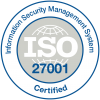Geofencing is a location-based technology that uses GPS, Wi-Fi, or cellular data to create a virtual boundary or perimeter around a real-world geographic area. This virtual boundary can be defined by a set of geographic coordinates and a radius, creating a fence around the specified area. These actions can be customized based on specific criteria, such as sending alerts to users, updating data records, or triggering automated processes.
Quixy's Geo-Fencing operates on two primary modes: Static and Dynamic.
Static Geo-Fencing
Static geofencing in Quixy refers to the use of a fixed, predefined geographic area as a trigger for actions or notifications within a single application. This means that a specific location is defined as a geofence, and when a user or device enters or exits this predefined area, it can initiate predefined actions or notifications within the Quixy application.
Dynamic Geo-Fencing
Dynamic geofencing in Quixy involves the use of the geofencing concept to define multiple locations, each with its own specific boundaries, within a single application. This means that instead of having a single fixed geofence, dynamic geofencing allows for the creation of multiple geofences, each tailored to a different locations with the respective boundaries as per users' requirements.
Imagine a scenario where a field agent is responsible for updating production and construction stages at various government construction sites throughout a city like Hyderabad. With Quixy's Dynamic Geo-Fencing, a manager of the field agent can effortlessly create virtual boundaries for each site, ensuring that data updates are only allowed when the field agent is physically present within the predefined perimeter. As an example, suppose a field agent needs to update the status of a construction site located in Jubilee Hills. With Quixy's Dynamic Geo-Fencing, the manager of the agent can set a customized radius around the site at multiple locations. When the agent enters this designated area and selects the site for inspection, they can access the relevant forms to input the necessary data. However, access is granted only if the agent is physically present within the specified location.
However, if they are outside this perimeter, access is restricted, ensuring that data is captured accurately based on the agent's physical location. This level of precision not only enhances data accuracy but also streamlines field operations by providing a seamless and secure method for updating critical information from the field.
- An employee must stay connected to the internet and have their GPS turned on during the process.
- If an employee is not at the specified location or is outside the radius, the system will display a predefined error. The administrator can choose between two types of restrictions.
- A warning message that informs the employee they are not at the specified geofencing location and asks if they would like to continue.
- A strict restriction that completely prevents the employee from continuing further by displaying a message stating, You are not at the required location. You cannot continue.
Configuration
Adoption
.png)






